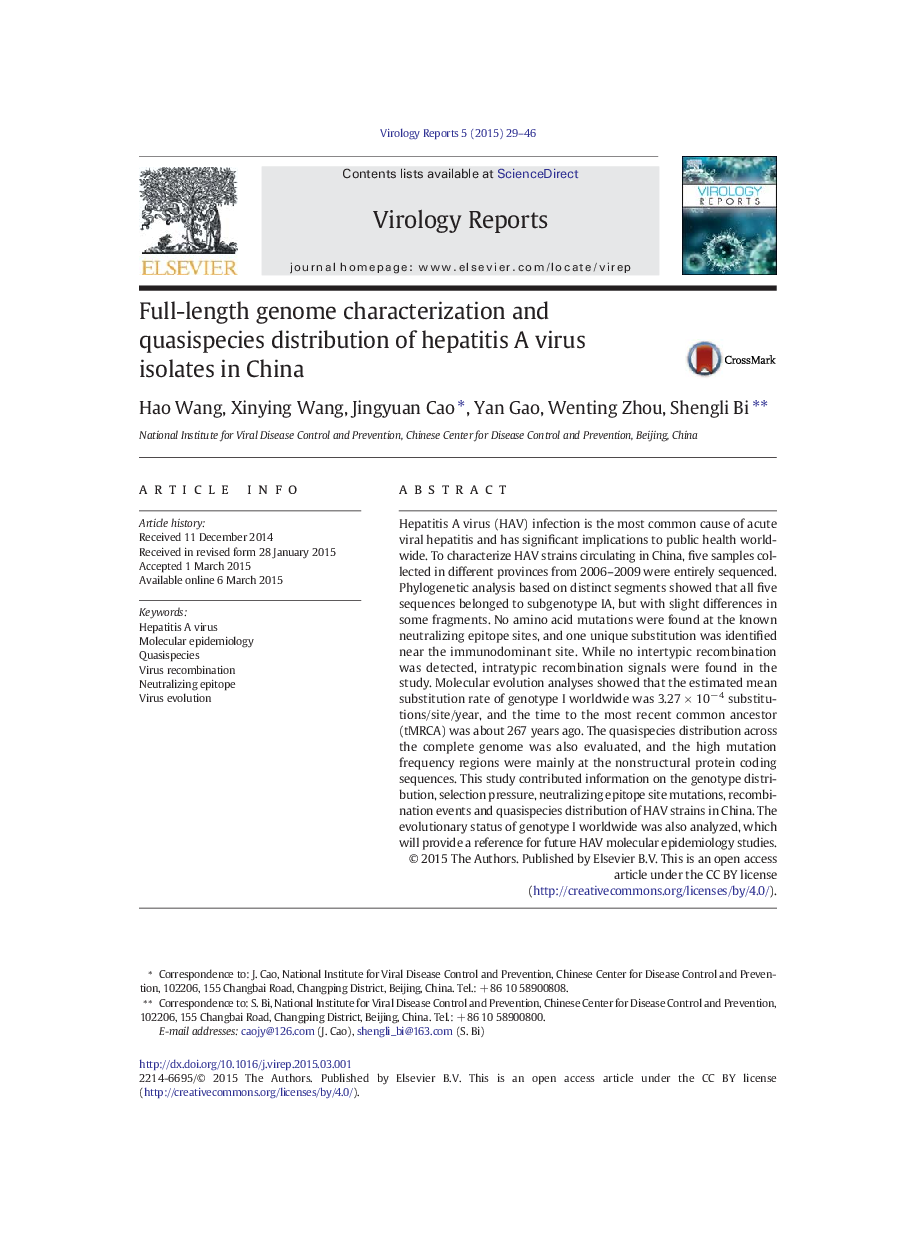| Article ID | Journal | Published Year | Pages | File Type |
|---|---|---|---|---|
| 2205401 | Virology Reports | 2015 | 18 Pages |
Hepatitis A virus (HAV) infection is the most common cause of acute viral hepatitis and has significant implications to public health worldwide. To characterize HAV strains circulating in China, five samples collected in different provinces from 2006–2009 were entirely sequenced. Phylogenetic analysis based on distinct segments showed that all five sequences belonged to subgenotype IA, but with slight differences in some fragments. No amino acid mutations were found at the known neutralizing epitope sites, and one unique substitution was identified near the immunodominant site. While no intertypic recombination was detected, intratypic recombination signals were found in the study. Molecular evolution analyses showed that the estimated mean substitution rate of genotype I worldwide was 3.27 × 10− 4 substitutions/site/year, and the time to the most recent common ancestor (tMRCA) was about 267 years ago. The quasispecies distribution across the complete genome was also evaluated, and the high mutation frequency regions were mainly at the nonstructural protein coding sequences. This study contributed information on the genotype distribution, selection pressure, neutralizing epitope site mutations, recombination events and quasispecies distribution of HAV strains in China. The evolutionary status of genotype I worldwide was also analyzed, which will provide a reference for future HAV molecular epidemiology studies.
